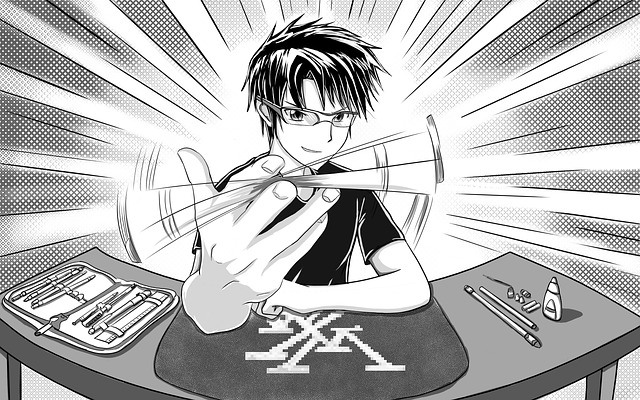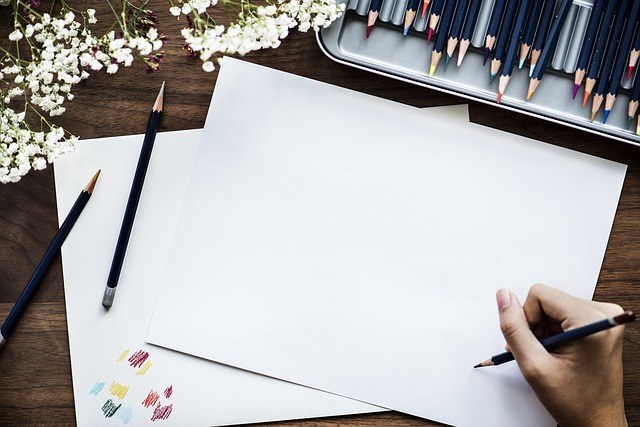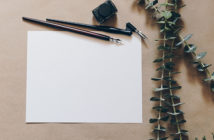A lot of people go through an anime phase! Aspiring artists often begin their journeys by drawing their loves and inspirations, and for a lot of people, these are anime and manga.
Aside from being a hugely influential art style, anime has several different sub-styles, each with their own unique qualities. The range is endless, and more and more are pouring out of Japan every year.
It’s not surprising that plenty of people are busting at the seams to learn how to draw manga!
From the colorful and exaggerated designs of One Punch Man, to the grim and gruesome Attack on Titan, to the hauntingly beautiful and otherworldly Princess Mononoke, most would be hard-pressed to not feel some inspiration!
Check out the tips and tricks below and start creating!
Contents
How to Draw Anime: Getting Started
But first…
Aren’t Anime and Manga the Same Thing?
Nope!
Let’s just clear something up right away: anime and manga are not the same thing. Anime is animated movies and shows broadcasted either online or on television.
Manga is (often) serialized graphic novels, typically sold as physical copies, but also widely available digitally nowadays.
Lots of mangas are actually adapted into animes too! Naruto and One Punch Man are two popular examples. With that out of the way, let’s begin!
Be Prepared to Practice
Learning how to draw anime takes time and patience, and a great deal of persistence! No artist is ever born overnight; each and every one will have mountains of sketchbooks piled behind them.
It is super important not to get discouraged when a piece doesn’t turn out the way you wanted it to. For every piece that you love, there will be another that you hate.
Few are ever completely satisfied with their work, even professional artists, and being resilient to disappointment is pretty important. Remember, you only fail if you don’t get up and try again.
Artist Guides
There are thousands of art guides whacked together by professional and hobbyist artists.
Not only books, but digital tutorials (most of which are free) that can really give you grounding knowledge in body proportions, facial expressions, expressing emotion through body language, coloring techniques, and poses.
What you may find, too, is that lots of the tutorials online are made with beginners in mind. If you’re ever Googling ‘how to draw anime for beginners,’ you’ll probably come across at least a dozen of these guides.
Horde them, like you’re the dragon all kids pretended to be on frosty mornings. Learn from these artists, keep their tips in mind, but don’t be afraid to do your own thing either!
Style Reference Sets
Anime and manga encompass a staggeringly wide range of aesthetics, and they aren’t necessarily easy to define.
Some people might find it easier to classify anime styles by the studio producing them, others by general art movements confined to a decade, and others might simply group styles together in a genre.
Whatever style(s) you pick, keep in mind that it is just a starting point while you get a handle on the basics.
Now, gather up a scrapbook or reference folder full of their work, stills from the animes, and take the time to identify the characteristics of their style. These are inspiration and references that you’ll use to build your skills, and eventually create your own style – if that’s what you wish to do.
Let’s take Studio Ghibli as an example. They have an anime style unique to their productions; a mixture of realistic proportions and soft edges for their human characters, and fantastical spins on the creatures that inhabit their rather marvelous fictional worlds.
The color palette is often soft, with the characters cell shaded and the environments incredibly detailed and lush.
Compare Princess Mononoke (created by Studio Ghibli) with, say, Neon Genesis Evangelion. The latter is reminiscent of a popular style of anime from the 1990’s, and contains a very different visual aesthetic; lots of sharp edges, lean figures, and a much darker color palette to suit the tone of the story.
(Color palettes can be used to reflect and enhance the tone of the story! Keep this in mind as you progress on your art journey!)
The point of using already established styles as a reference guide for anime and manga drawing is to help you build up confidence in your skills, and work your art ‘muscles.’
It is much easier to create your own style with this foundation of knowledge beneath you.
The Gear
As this guide is aimed at beginners, it isn’t going to cover digital art and graphics tablets.
Though there are software and art programs created specifically for manga and anime drawings, and producing digital art over physical art is a huge space-saver.
That said, for learning how to draw anime, here is what you’ll need:
- Sketchpad – general.
- Pencils.
- Erasers.
- Fine-tipped pens.
Coloring anime requires a whole other guide, as discussing the shading techniques, color values, and thematic schemes eat up a lot of words!
When you are ready for this stage, however, a set of watercolors, markers, or pencils will be your next batch of gear to buy.
Anime Drawings: Tips and Practices
You can jump right into drawing your favorite characters or creating your own. Or, you can practice the sections below and then use that skill to craft a fully fleshed out piece!
People work differently, artists especially, so if you find a way that works for you, then go for it!
Proportions
Anime styles kind of… do what they want with body proportions, but so long as you are consistent, it becomes a style.
Style aside, a useful rule of thumb is to keep bodies in proportion using the “seven head rule.” This means that, however large you draw the head, the rest of the body will be that measurement times seven.
Basically (and not to sound like a horror movie pitch), stack seven heads on top of each other.
This rule is good for beginners straying towards the more realistic side of anime drawings. There are more rules for keeping body parts in proportion to each other as well, although these can be dismissed depending on the particular style of anime you are working with.
If at all possible, find a guide or do a little research for the style you want to emulate. Creators sometimes provide a few of their personal rules, which you can then use as you practice.
Learn to draw anime by listening to these creators; they will be some of your best teachers.
References
Take this as an excuse to goof off with a camera and have some fun. Already existing anime and manga are useful as a style reference, but not so much as pose or expression references.
Gather a wide range of selfies, using different expressions and poses, and use these as references for your drawings.
Translating photos into anime is great practice, and it gets you into the hobby of looking into real life for inspiration.

Before you know it, you will have a dozen sketchbooks filled with your work. A lot of artists, professional and hobbyist, do this all the time! They will have folders full of references and use them for everything from concept sketches to full-fledged inked manga volumes.
Another important thing to know is that using references is a perfectly acceptable and necessary practice for all artists. Do not ever let someone tell you that using references amounts to cheating!
Break It Down
Jumping right off the deep end may work for some. Others, not so much.
One way to make learning how to draw anime easier is to break down the separate elements of what you are trying to draw.
Say that you want to draw a scene between two characters in a forest. Breaking the concept down results in something like this: character A, character B, foliage, and background.
Gathering references and practicing these different elements is great for flexing your art muscles, as it were, and makes it easier to compile a fleshed out picture that you can feel proud of.
Artists, digital or not, often have pages and pages where they draw nothing but eyes, poses, lips, or hands. Not only is this a good habit to get into, but practicing in this manner allows you to develop a consistent style over your total work.
Anime hugely benefits from consistency, especially if you are getting into drawing anime and manga because you want to be a creator or animator one day!
A Light Touch
Sketching requires a light touch. When it comes to anime, draw with a sensitive touch – barely put any pressure on the lead at all.
Not only does this keep your frustration from mounting when a mistake is made, but it enables you to erase the sketch layer easily after inking the line art with pen.
Easing off on the pressure stops your hand from cramping quite so much in the long run too.
Here’s a video showing how to draw anime hands to get you started.
To End…
This guide is all about preparing you for your first steps into the world of drawing anime.
Aside from being a diverse art form, anime is all about creativity and consistency; developing the skills to draw anime takes time and patience.
Lots of help can be found online, in the form of guides to drawing anime from thousands of artists, and it’s all yours at the touch of a button. All you have to do it look.
Arm yourself with this advice and you’ll be ready to tackle any idea you can come up with! Art is a journey; start yours today.
Do you have any tips or advice on how to draw anime?






